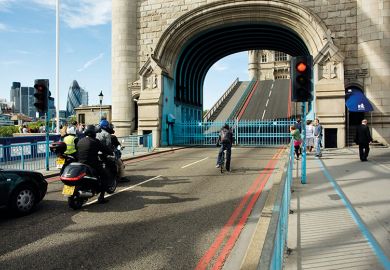In the pantheon of pause-inducing Trumpisms, Donald Trump’s pronouncement after sweeping the primary caucuses in the state of Nevada on his way to the Republican US presidential nomination got comparatively little attention.
“I love the poorly educated!” Mr Trump exclaimed.
Nevada, which Mr Trump won decisively, ranks second to last among the 50 US states in the proportion of the population with university degrees.
But the connection between education level and politics in this presidential race goes well beyond a desert state dominated by the service economy of Las Vegas.
The education voting gap is wider than in decades, to the decided advantage of the real-estate magnate who himself has a bachelor’s degree in economics from the Wharton School of the University of Pennsylvania.
And it’s part of a dramatic and growing political rift between the highly educated and the less well-educated, one of many divides that appear to be contributing to US political dysfunction and one that was also identified as a key factor in the UK referendum on European Union membership.
Although the disparity has become a favourite talking point of pundits, pollsters, Trump critics and comedians – some of whom portray backers of Mr Trump as angry and ignorant – a closer look shows that it has more to do with who goes to university than with the fact that they went there.
Women and younger voters, for example, who traditionally skew to the Left, are also more likely to have higher degrees than the more conservative men and older voters who support Mr Trump.
“Those two factors in particular are helping to produce the imbalance,” said Peter Brown, assistant director of Quinnipiac University Poll, a widely respected polling institute.
In the primary elections, Mr Trump won support from 65 per cent of registered white voters without university degrees, compared with 46 per cent from whites who have university educations, according to a Washington Post/ABC News poll – a 19-point gap, and the largest in more than 35 years.
Another poll of voters, by CNN, showed Mr Trump with 57 per cent support among people without a university education, 37 points higher than any other candidate.
Less well-educated whites have long leaned towards Republicans over Democrats, but not to this extent. In the previous presidential election, the Republican candidate, Mitt Romney, won 61 per cent of whites without a university education, compared with 36 per cent who voted for Barack Obama – a 25-percentage point variance. Polls show Mr Trump leading his Democratic rival Hillary Clinton among this group by 65 per cent to 25 per cent, a 40-point difference.
One reason is self-evident: in a knowledge economy, workers who have less education and are employed in the service and manufacturing sectors are the most likely to fear competition from recent trade deals and from immigrants, whom Mr Trump has promised to restrict.
“Many of them believe what Trump is telling them about trade and how it’s been responsible for their economic problems and that he would have a different strategy on trade,” said Mr Brown, whose poll calculates the disparity between the better-educated and the less well-educated to be less pronounced. “For what we might classify as blue-collar workers who have lost jobs or lost income, what Trump is talking about is very much on point.”
Another, less well-understood reason for the polarisation appears to be a hardening of views among the better-educated.
Surveys by the non-profit, non-partisan Pew Research Center find that highly educated Americans have become more staunchly liberal across the board, with less flexibility than in the past in their opinions and, presumably, less inclination to compromise. The share who take both liberal and conservative views on different issues has declined over the 20 years that the polling has been done.
More than half of Americans with advanced degrees fall under the definition of “liberal” in their positions about the role of the government in environmental and social issues, while most of their countrymen without degrees – about 55 per cent of the population nationwide, and as much as nearly two-thirds in states including Nevada – are conservative, Pew found.
But Mr Brown pointed out that gender and race are far more polarising than education level, as are age and income – and that the dramatic numbers stem from the fact that all those other characteristics correlate with education.
Sure, he said, “some of what’s feeding into this phenomenon is based on education. But some is based on demographics. All of those are factors, and they all overlap.”
后记
Print headline: Degrees of difference visible in US voters




